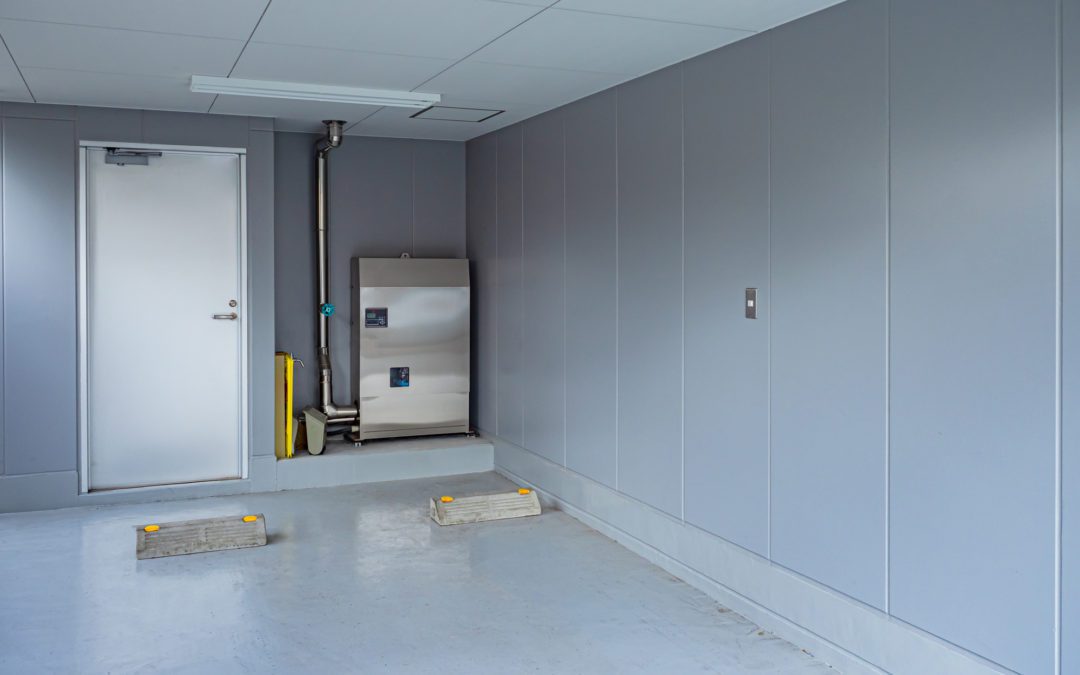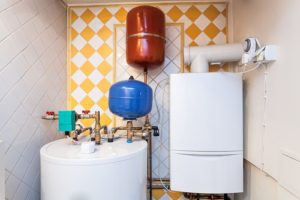Most homes in the United States are heated with furnaces, powered by either natural gas or electricity. According to the U.S. Energy Information Administration (EIA), natural gas furnaces are the most common “main space heating equipment” used in every region of the country. Exceptions are the “hot-humid” region of the southeastern United States (which includes Florida, Louisiana, and parts of Texas, Mississippi, Alabama, Georgia, and South Carolina). In that part of the country, the most popular method for space heating in a home is an electric furnace. Despite the dominance of furnaces, though, residential boilers still retain a foothold among a small niche of homeowners. In this post, we’ll take a closer look at how boilers work, when/where they are beneficial, and how popular they currently are in the HVAC marketplace.
Residential Boilers: Some Key Details
A furnace delivers heat to your home by way of heated air. A boiler delivers heat to your home by way of heated water. While the delivery methods are different, both systems are examples of central heating. Your furnace blows hot air through ducts, which in turn convey it to the vents throughout your home to heat individual rooms. Your boiler is a special type of water heater that heats water and then uses a pump to send it to different parts of the home through a network of pipes, radiators, or baseboard heat registers. The hot water delivers heat to each room by way of radiant heat. As the water cools, it is returned to the boiler to be heated once more.
Boilers are less common and less popular than forced-air furnace systems. According to a report from the University of Michigan, boilers were used in about 12 percent of households in 2001. That number fell to eight percent by 2015. Despite the dip in popularity, though, boilers have stuck around—and are expected to maintain their niche in the coming years. The U of M report also noted that market revenue projects for boilers were expected to grow at a compound annual growth rate (CAGR) of 5.6 percent between 2016 and 2024.
Why are these systems still the preferred option among some homeowners? There are three main reasons. First, water is better at holding heat than air, which makes a high-quality, well-maintained boiler a more energy-efficient and cost-effective way to heat a home than a furnace. Second, because boilers don’t have to blow air to deliver heat, they don’t distribute dirt, dust, mold spores, dander, and other particles throughout a home in the way that a central air system can (particularly one with dirty ducts). Third, boilers have fewer mechanical parts than most other types of home heating systems, which means they typically need less maintenance—and last for longer—than the average furnace.
Different Types of Boilers
There are six different types of residential boilers available. Note that these categories are not all standalone; most boilers fall into at least a few of the six common categories.
Gas boiler
- Gas boilers are by far the most common types of household boilers in the United States. There are two sub-types of boiler in this category: natural gas, for homes in more populated areas that are connected to gas utilities; and propane, for rural homes that aren’t connected to the main gas line utilities due to their remote locations. Both sub-types work the same way, burning natural gas to heat water and then using the hot water to heat the home in the method described above.
Electric boiler:
- Just as there are gas and electric furnaces, there are gas and electric boilers. Electric boilers work in much the same way as gas boilers, except they use electricity to heat the water in the boiler rather than natural gas. The big advantage of these systems is that they are greener and more efficient than gas boilers. The big disadvantages are that they aren’t as powerful (making them less ideal for larger properties) and that they leave homes without heat if/when there is a power outage.
Hot water boiler:
- Hot water boilers are boilers that heat hot water and use pumps to deliver it to pipes, radiators, or heat exchangers throughout the home. Most boilers are hot water boilers.
Condensing boiler:
- Condensing boilers use two heat exchangers (rather than one, which used to be standard). The first heat exchanger plays the customary role of heating the water in the boiler before it is pumped out to the radiators in your home. The second heat exchanger reheats water as it returns from the piping back to the boiler. This system essentially allows condensing boilers to use the energy potential in steam and other exhaust gases to preheat water as it returns to the boiler to be used again. The result is a more efficient type of boilers.
Steam boiler:
- Steam boilers heat water and turn it to steam, which then rises through the pipes of the house and into radiators. The hot steam heats the radiators, which in turn deliver radiant heat to the home. As the radiators cool, the steam condenses back into water and flows back down the pipes into the radiators.
Oil boiler:
- Oil boilers still use hot water to deliver heat but heat that water by burning oil rather than natural gas or propane. These types of boilers are, similar to propane boilers, more common in remote or rural areas.
Not sure which type of boiler is best for your home? No worries; HVAC experts not only know everything about furnaces but can also advise you on residential boilers. Whether you are picking out a unit for a new home or trying to determine what type of boiler you currently have, a call to your HVAC contractor will help you find the solution you are seeking.


